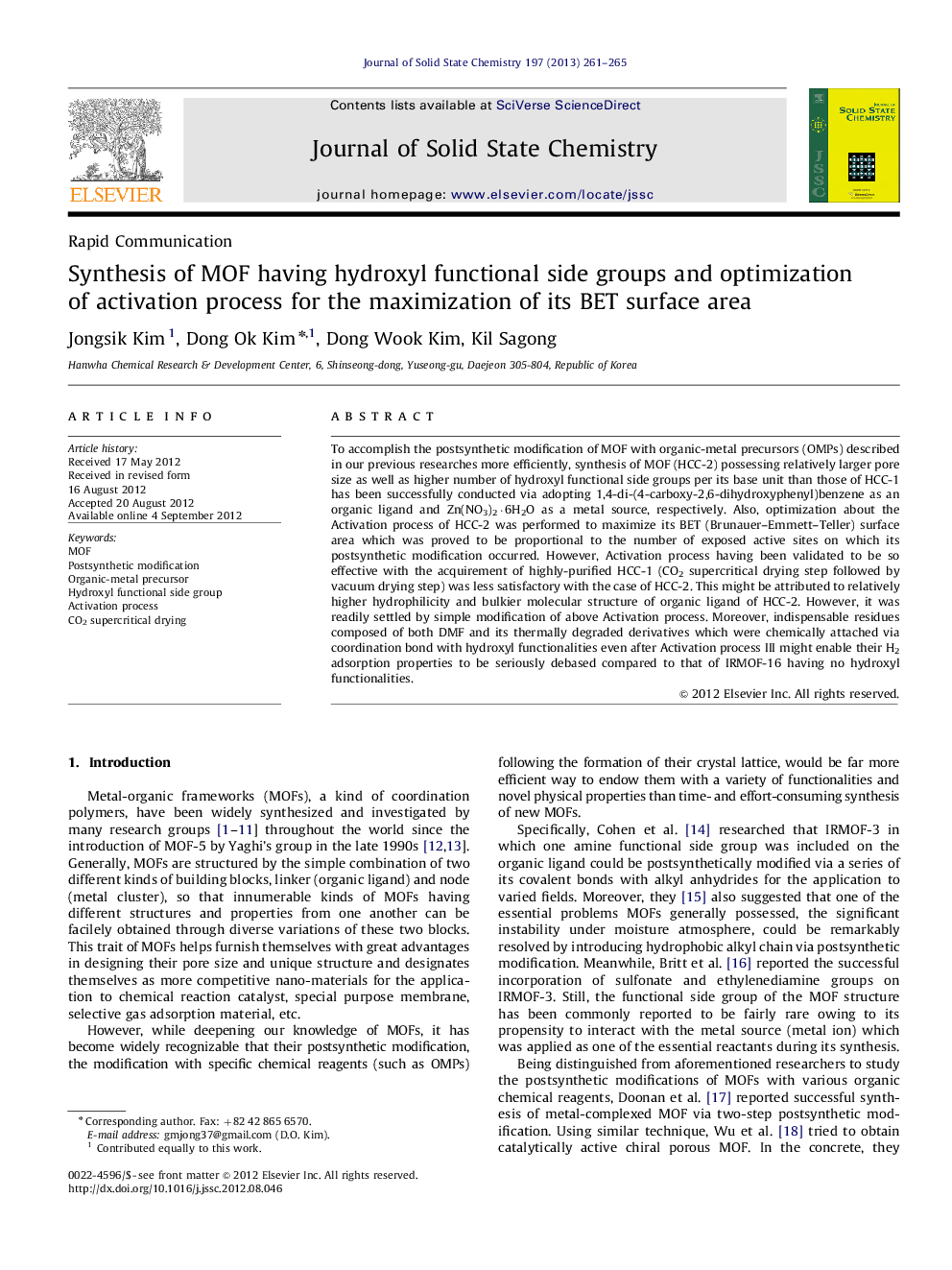| Article ID | Journal | Published Year | Pages | File Type |
|---|---|---|---|---|
| 1330145 | Journal of Solid State Chemistry | 2013 | 5 Pages |
To accomplish the postsynthetic modification of MOF with organic-metal precursors (OMPs) described in our previous researches more efficiently, synthesis of MOF (HCC-2) possessing relatively larger pore size as well as higher number of hydroxyl functional side groups per its base unit than those of HCC-1 has been successfully conducted via adopting 1,4-di-(4-carboxy-2,6-dihydroxyphenyl)benzene as an organic ligand and Zn(NO3)2·6H2O as a metal source, respectively. Also, optimization about the Activation process of HCC-2 was performed to maximize its BET (Brunauer–Emmett–Teller) surface area which was proved to be proportional to the number of exposed active sites on which its postsynthetic modification occurred. However, Activation process having been validated to be so effective with the acquirement of highly-purified HCC-1 (CO2 supercritical drying step followed by vacuum drying step) was less satisfactory with the case of HCC-2. This might be attributed to relatively higher hydrophilicity and bulkier molecular structure of organic ligand of HCC-2. However, it was readily settled by simple modification of above Activation process. Moreover, indispensable residues composed of both DMF and its thermally degraded derivatives which were chemically attached via coordination bond with hydroxyl functionalities even after Activation process III might enable their H2 adsorption properties to be seriously debased compared to that of IRMOF-16 having no hydroxyl functionalities.
Graphical abstractSynthesis of new-structured MOF (HCC-2) simultaneously possessing relatively larger pore size as well as higher number of hydroxyl functional side groups per its base unit at the same time than those of HCC-1 has been performed via adopting 1,4-di-(4-carboxy-2,6-dihydroxyphenyl)benzene as an organic ligand and Zn(NO3)2·6H2O as a metal source, respectively. Also, the optimization of activation process for HCC-2 was conducted to maximize its BET surface area while the suitability of this activation process was proved via SEM, TGA, EA, XRF, and PSD. Being compared with the crystal structures of IRMOF-16 and HCC-1 via XRD and FT-IR analysis, the crystal structure of HCC-2 having an identical chemical structure except the introduction of four hydroxyl functional side groups on the backbone of its organic ligand showed no noticeable change. Specifically, HCC-2 was established as a cubic structure with each axis of about 21.5 Å. Moreover, H2 adsorption isotherms for these HCCs were attained to ultimately examine that hydroxyl functionalities inside their pores have any influence on their H2 adsorption properties.Figure optionsDownload full-size imageDownload as PowerPoint slideHighlights► HCC-2 having higher number of hydroxyl groups than that of HCC-1 was prepared. ► The optimization of activation process for HCC-2 was studied. ► The crystal structure of HCC-2 was a cubic-shaped structure with each axis of 21.5 Å. ► –OH functionalities on HCCs had negative influence on their H2 adsorption abilities. ► This might be due to impurities rigidly attached to their functional side groups.
